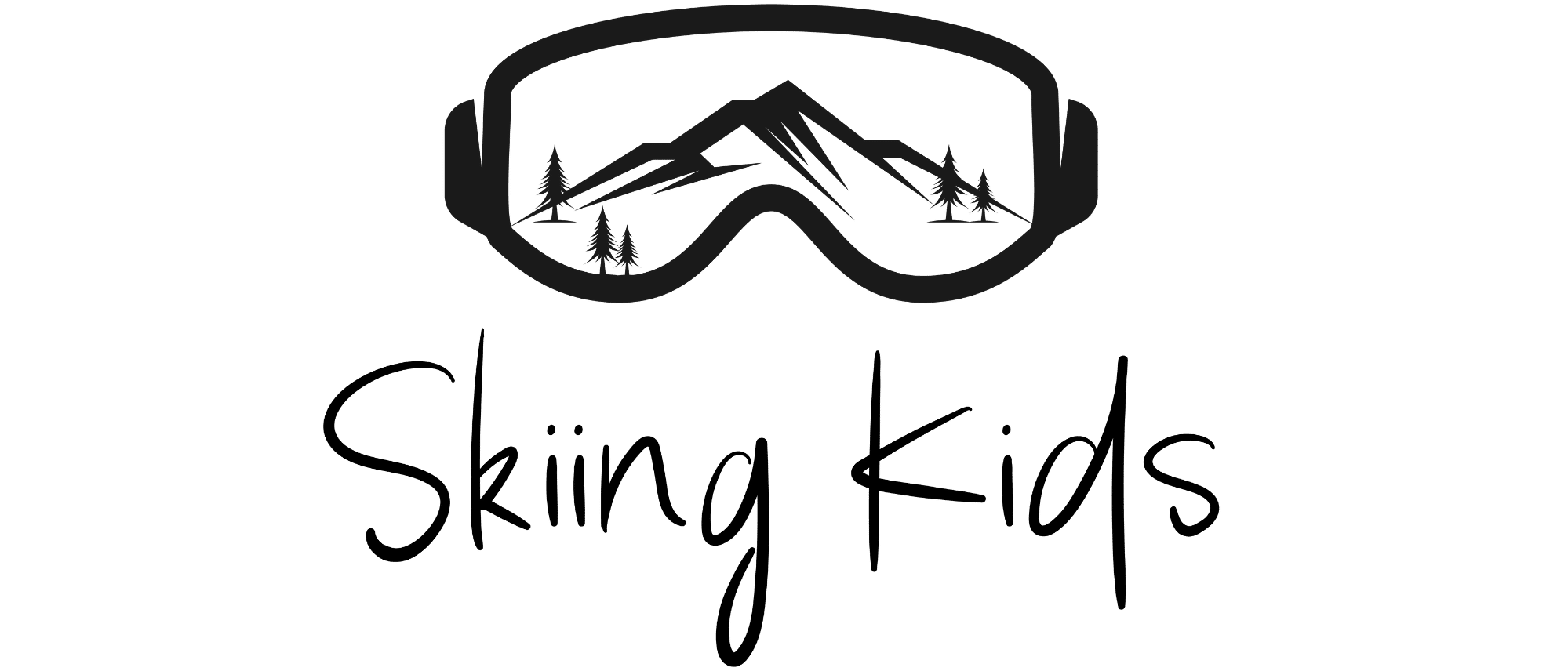This post may contain affiliate links where we earn from qualifying purchases from referring you to our favorite products and brands. As an amazon associate, we earn from qualifying purchases. Find out more in our disclosure.
Skiing is our all-time favorite way to get outside and stay active during the winter. It’s such a fantastic family sport and even toddlers can enjoy skiing with the rest of the family. Depending on where you live and what sort of adventure you’re up for, there are a few different types of skiing that you can try out.
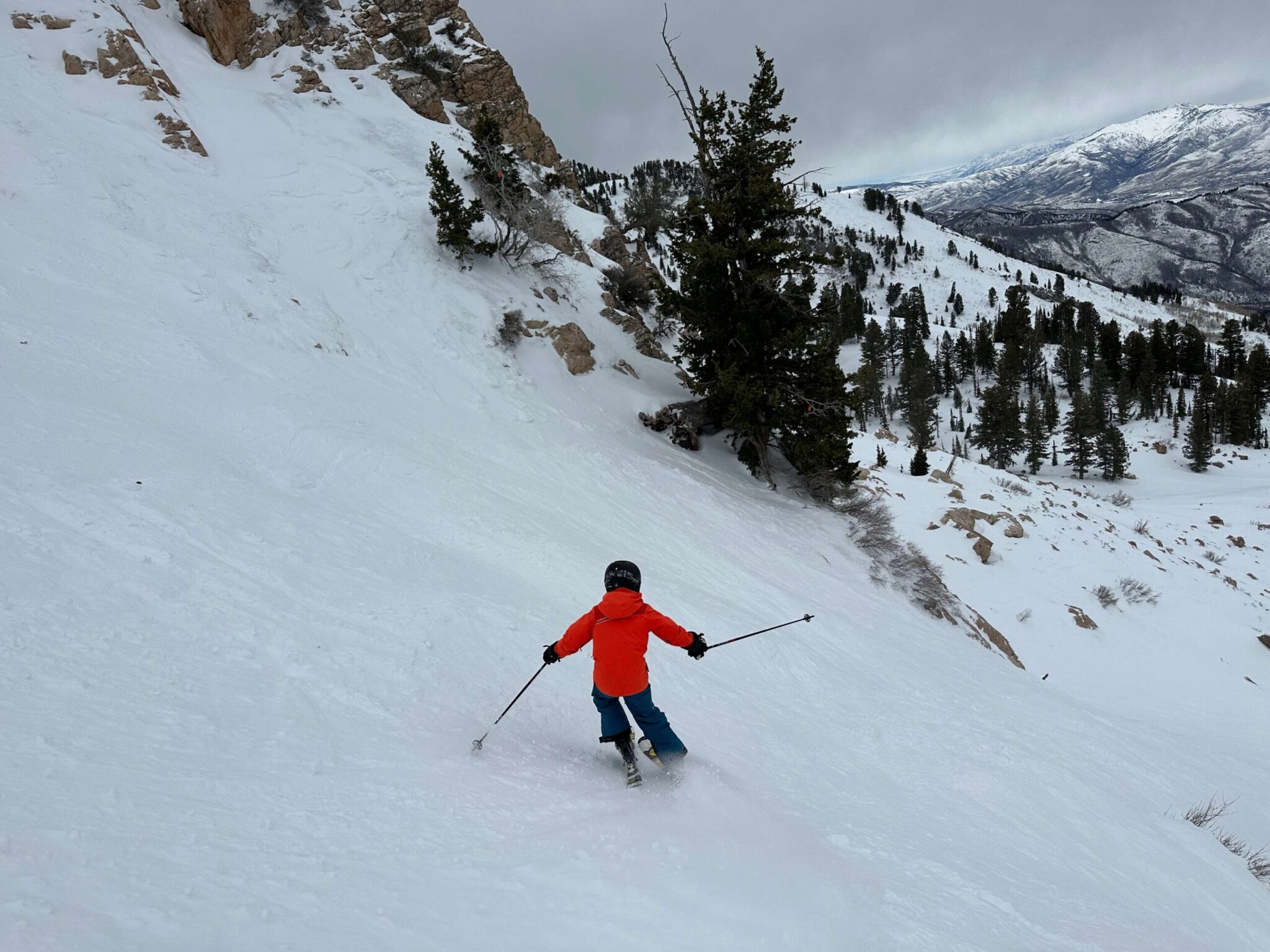
The most popular ski styles are Alpine and Nordic skiing. While both Alpine and Nordic skiing involve skis gliding across the snow, there are some pretty big differences that might help you decide which type of skiing is best for you.
Keep reading below to learn about the different styles of Alpine vs. Nordic skiing, the different gear involved, and the best places for Nordic vs. Alpine skiing.
What is Alpine Skiing?
Alpine skiing is primarily focused on downhill skiing at ski resorts. Most Alpine skiing takes place on groomed slopes or off-piste, using stiff boots that are securely attached at the toe and heel to shorter, stiffer skis. Most Alpine skiing is done at ski resorts where you’ll take the chairlift up, and the downhill portion requires speed control and turning.
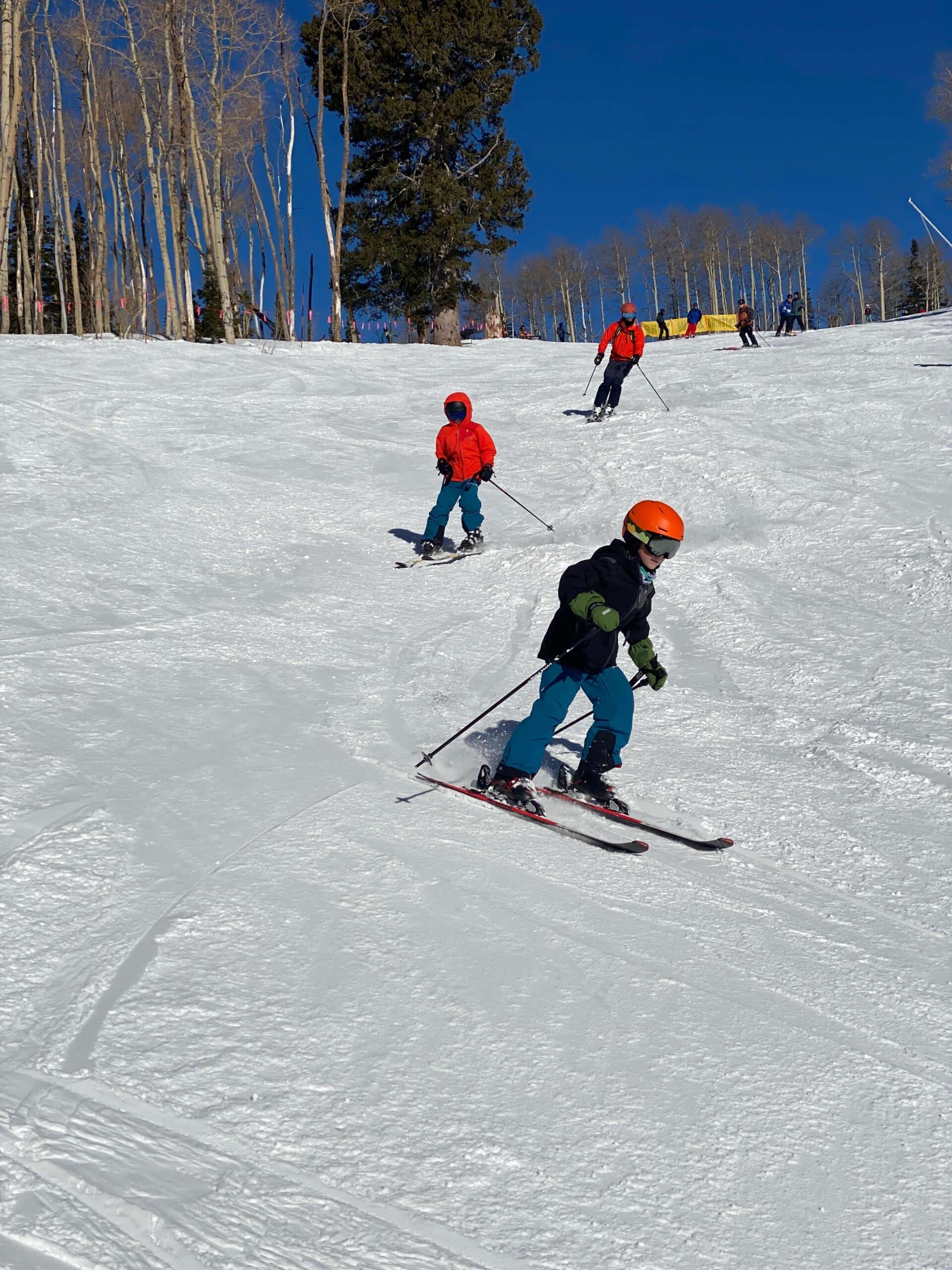
What is Nordic Skiing?
Nordic skiing is more commonly known as cross-country skiing and is more versatile in terms of terrain, suitable for flat ground, rolling hills, or mountainous areas. Nordic skis are longer and thinner, and the boots, which are more flexible, are attached only at the toe for greater movement. Nordic skiing techniques can be divided into classic and skate skiing and generally do not use lifts, requiring skiers to propel themselves on flat or uphill terrain. Nordic skiing is a very active sport and requires a high level of fitness and good endurance if you plan on going fast (especially where uphill climbs are required).
Within Nordic skiing, there are 2 major disciplines, Classic and Skate Skiing.
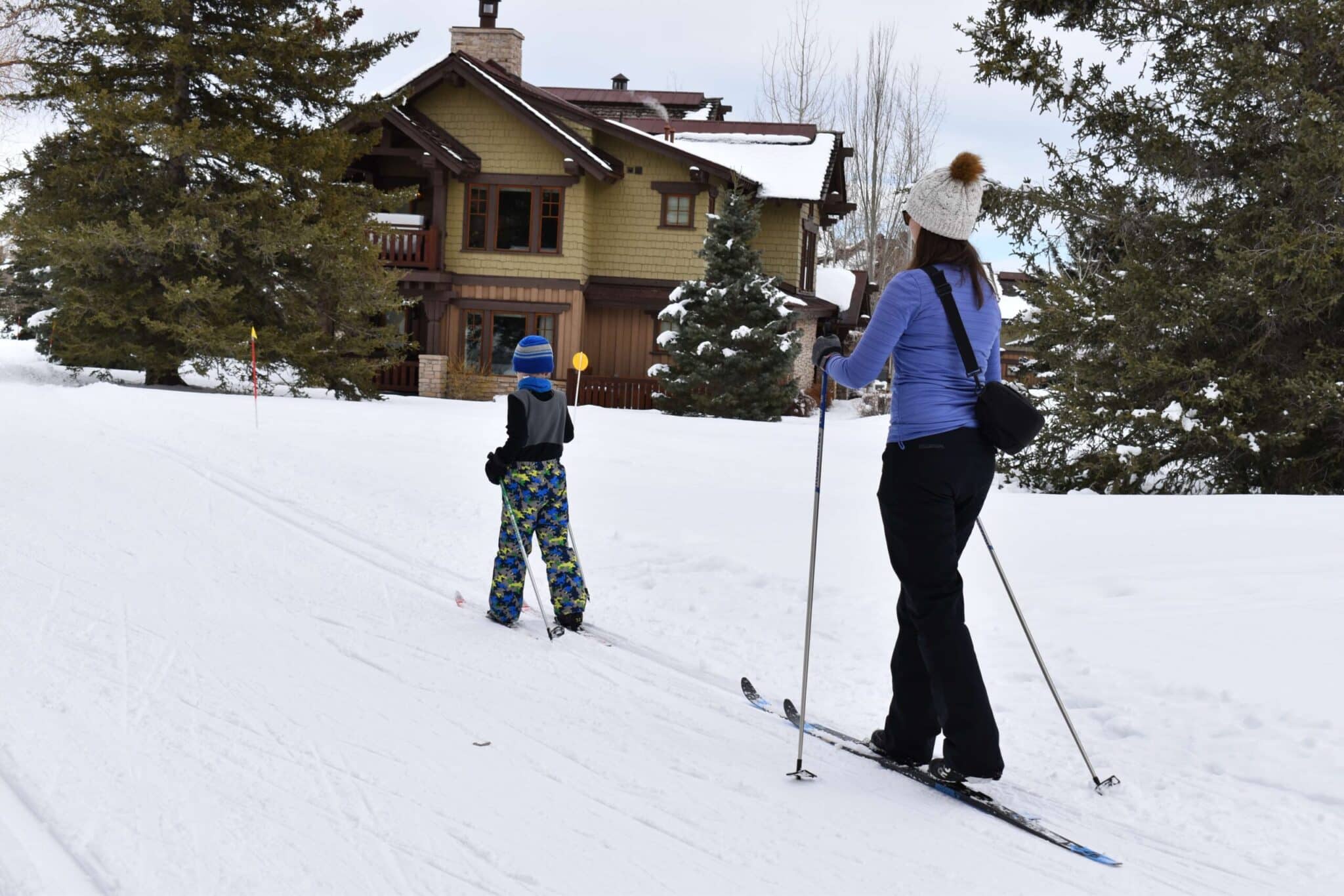
Classic Nordic Skiing
Classic Nordic skiing is one of the oldest forms of cross-country skiing and is generally done on groomed tracks that have parallel grooves set into the snow to guide the skis. In classic skiing, the motion is somewhat similar to walking or running, where one ski is moved ahead of the other in a straight line. The boots in classic skiing are flexible, providing freedom of movement, and they attach to the skis only at the toes.
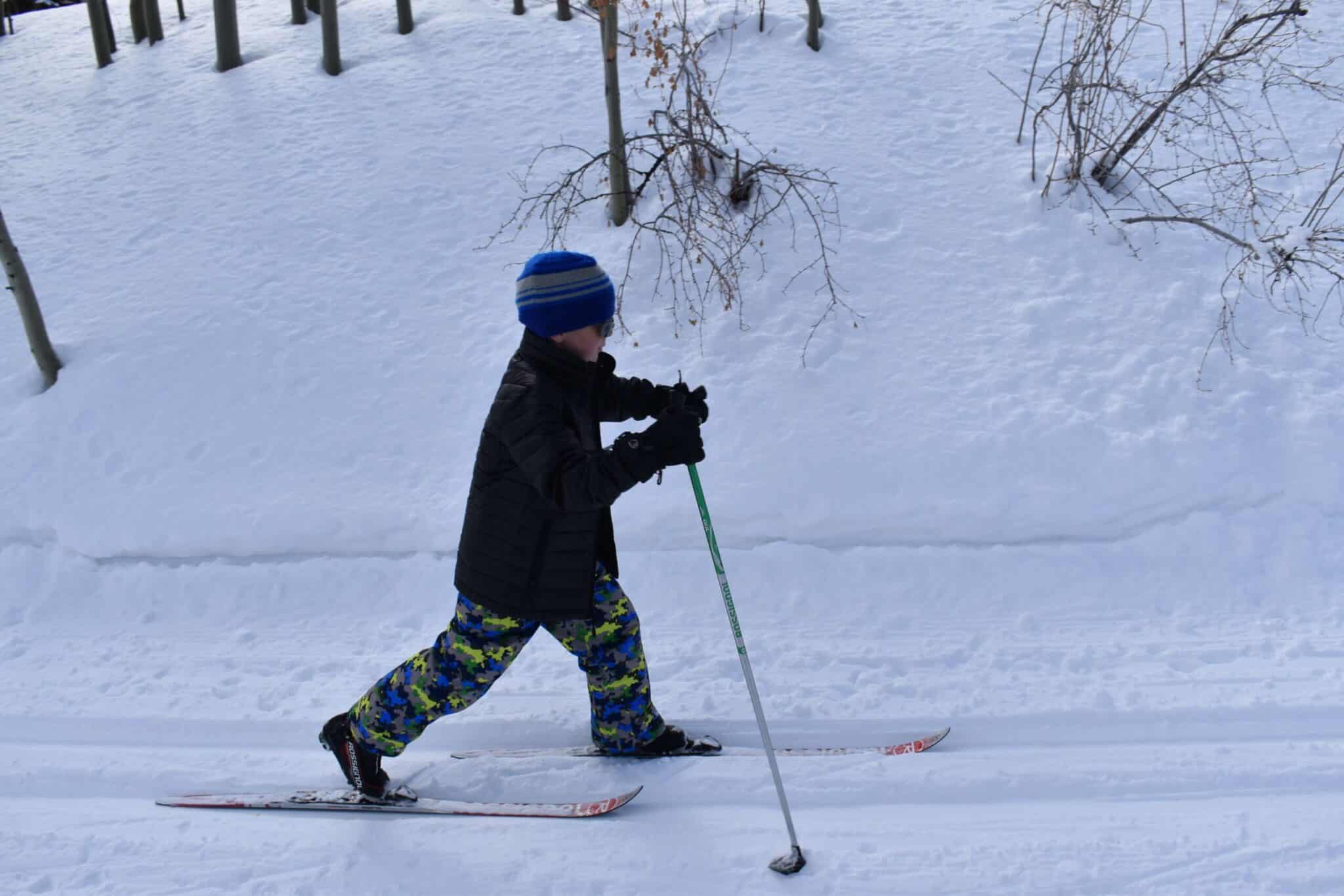
Skate Nordic Skiing
Skate skiing, a more recent innovation in Nordic skiing, is akin to ice skating and is performed on a wide, groomed track without the parallel grooves used in classic skiing. In skate skiing, the skis are pushed apart at an angle, similar to the way ice skates are used, and then brought back together, forming a V-shape as the skier progresses. The technique is more dynamic and generally faster than classic skiing. Skate skiing boots are more rigid than classic boots, providing better ankle support, and they also attach at the toe to allow for a range of motion.
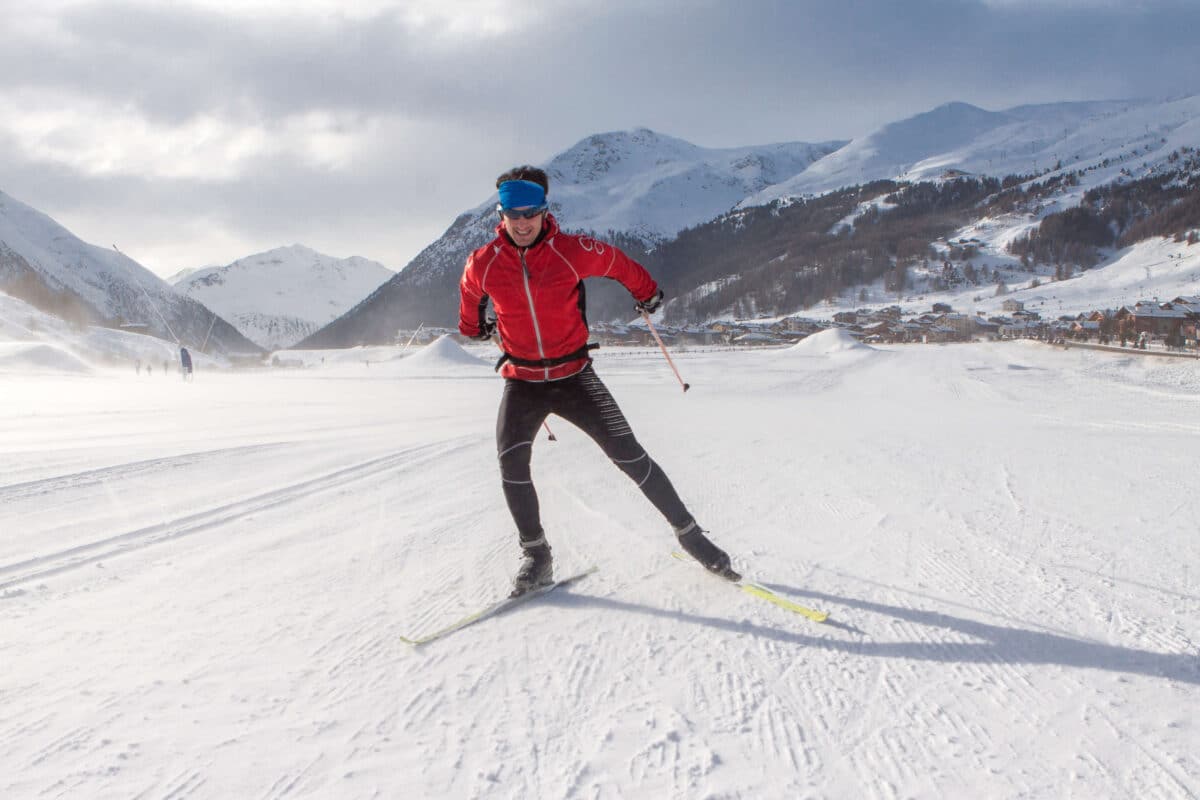
How are Alpine and Nordic Skiing The Same?
Whether you’re trying Alpine skiing or Nordic skiing, your main goal is to get from point A to point B across the snow. While they both use skis, you cannot use the same skis for both Alpine and Nordic skiing. Alpine skis are wider and shorter and have metal edges and rigid bindings. Nordic skis are long and skinny, with flexible bindings and plastic edges.
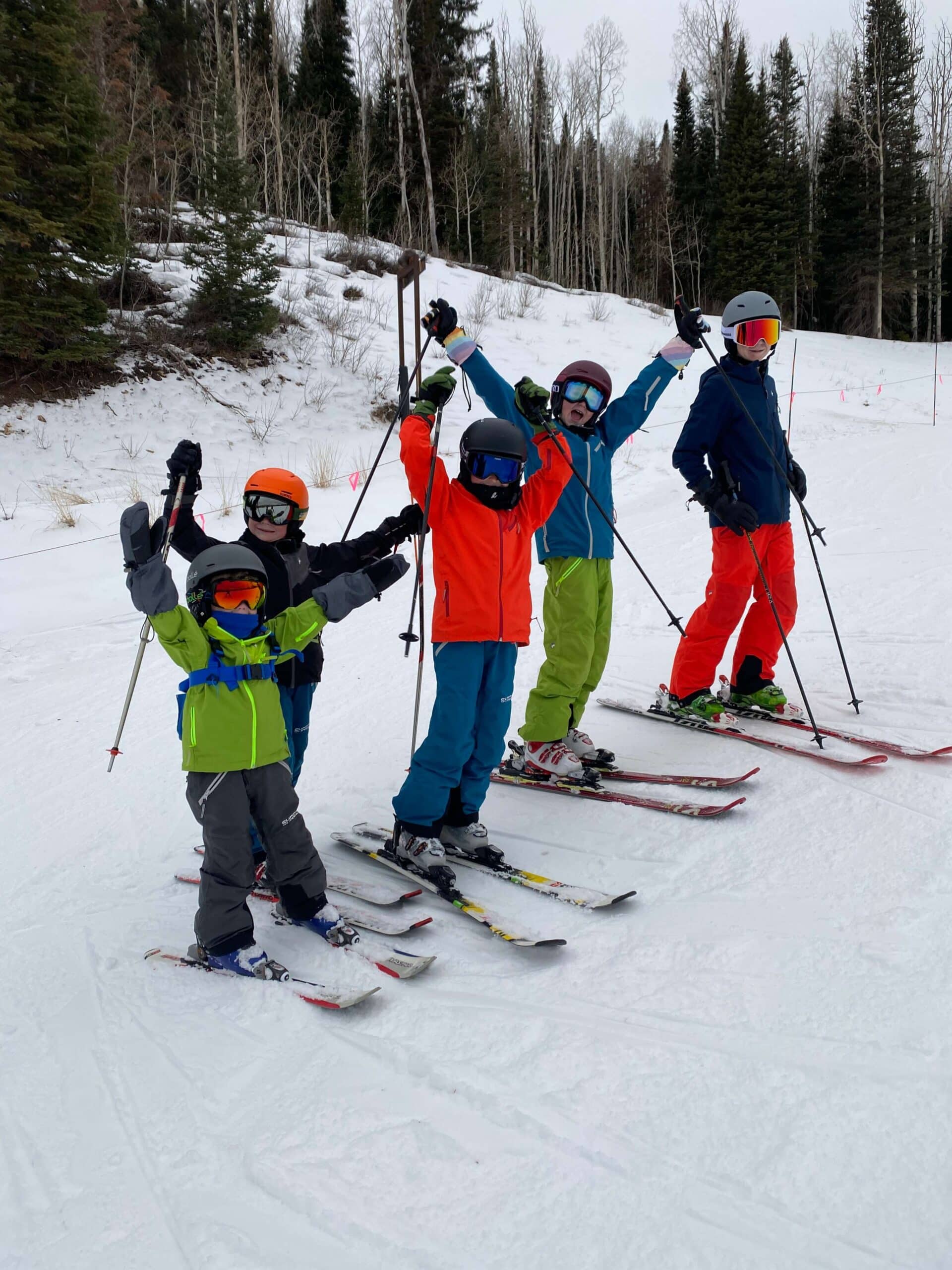
What Are The Differences Between Alpine and Nordic Skiing?
Once you start to learn more about Nordic and Alpine skiing, you’ll start seeing some major differences. In fact, they’re so different that many people don’t consider them even closely related (which is both true and false). Here are some of the major differences between Nordic vs Alpine skiing. Some areas have flatter terrain and are more suited to Nordic Skiing, and more mountainous areas are great for Alpine Skiing.
Terrain Differences Between Alpine and Nordic Skiing
Most of the major differences between Alpine and Nordic skiing come from the different terrain where you do them. Each type of skiing is suited to one type of terrain and that terrain dictates the equipment, the clothing the techniques… basically everything. Imagine this in terms of cycling. You wouldn’t take a road bike on a crazy downhill course any more than you would use a full suspension mountain bike in the Tour de France. The terrain dictates the sport.
Terrain for Alpine Skiing
The terrain for Alpine skiing is on mountains or large hills. The focus of Alpine skiing is really in going DOWN the mountain, not up. Nearly everyone who downhill skis takes a lift of some sort to get to the top, and they just have to safely get to the bottom. Because of the downhill terrain in Alpine skiing, there’s a huge emphasis on stopping, turning and proper technique. Alpine skiers could encounter moguls, powder, groomed hills, or even cliffs.
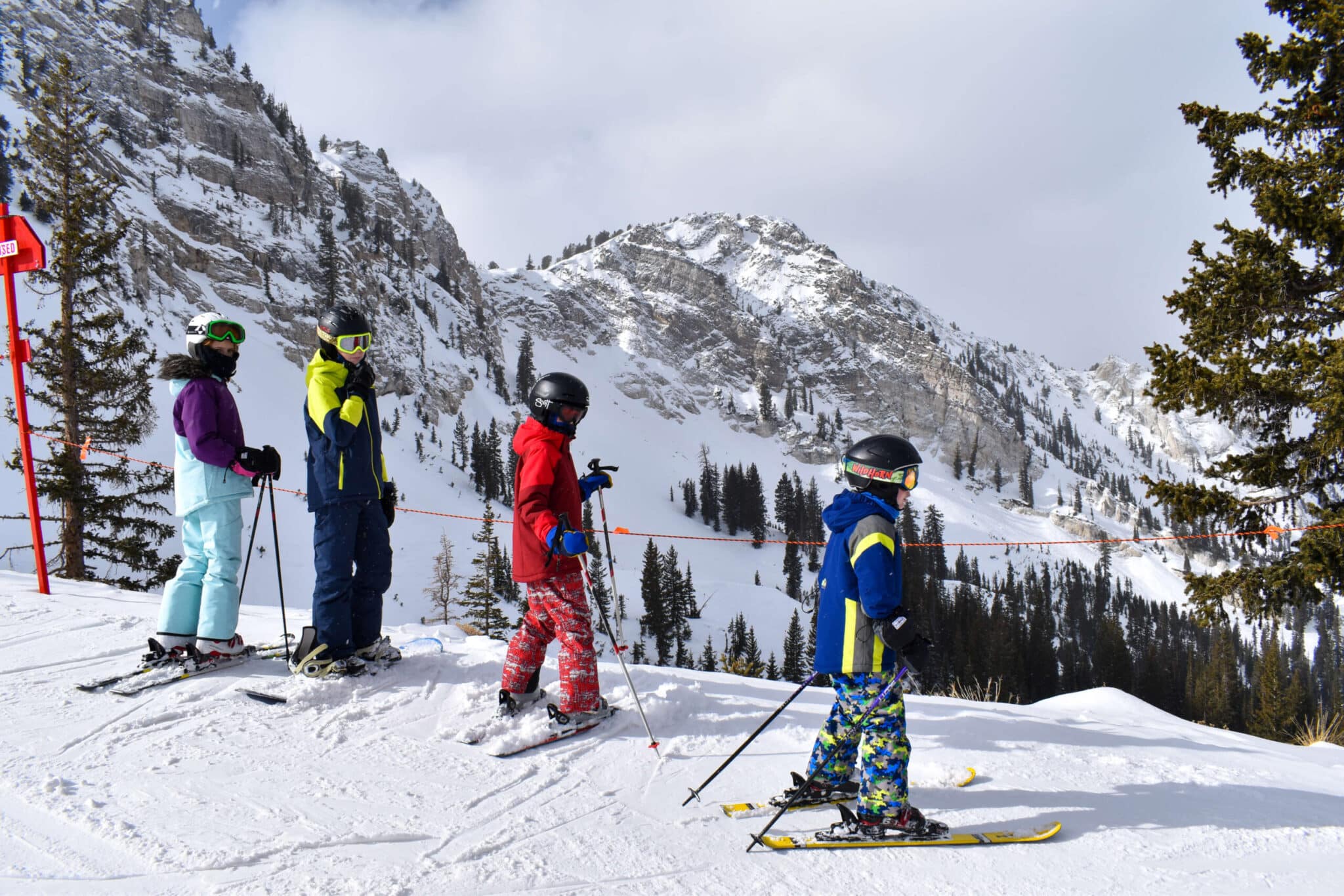
Terrain for Nordic Skiing
When it comes to terrain for Nordic skiing, just about anything goes. It could be flat, downhill and uphill (though generally not as steep as Alpine ski terrain), or it could be a wild combination. Nordic centers often have groomed tracks for skiers to ski along, many with classic tracks set to make classic skiing easier. These Nordic centers are excellent for beginners. Many experienced Nordic skiers use Nordic skiing as a way to see backcountry areas in the winter, so the variety of the terrain is HUGE. Many popular summer hiking trails make great Nordic ski trails in the winter.
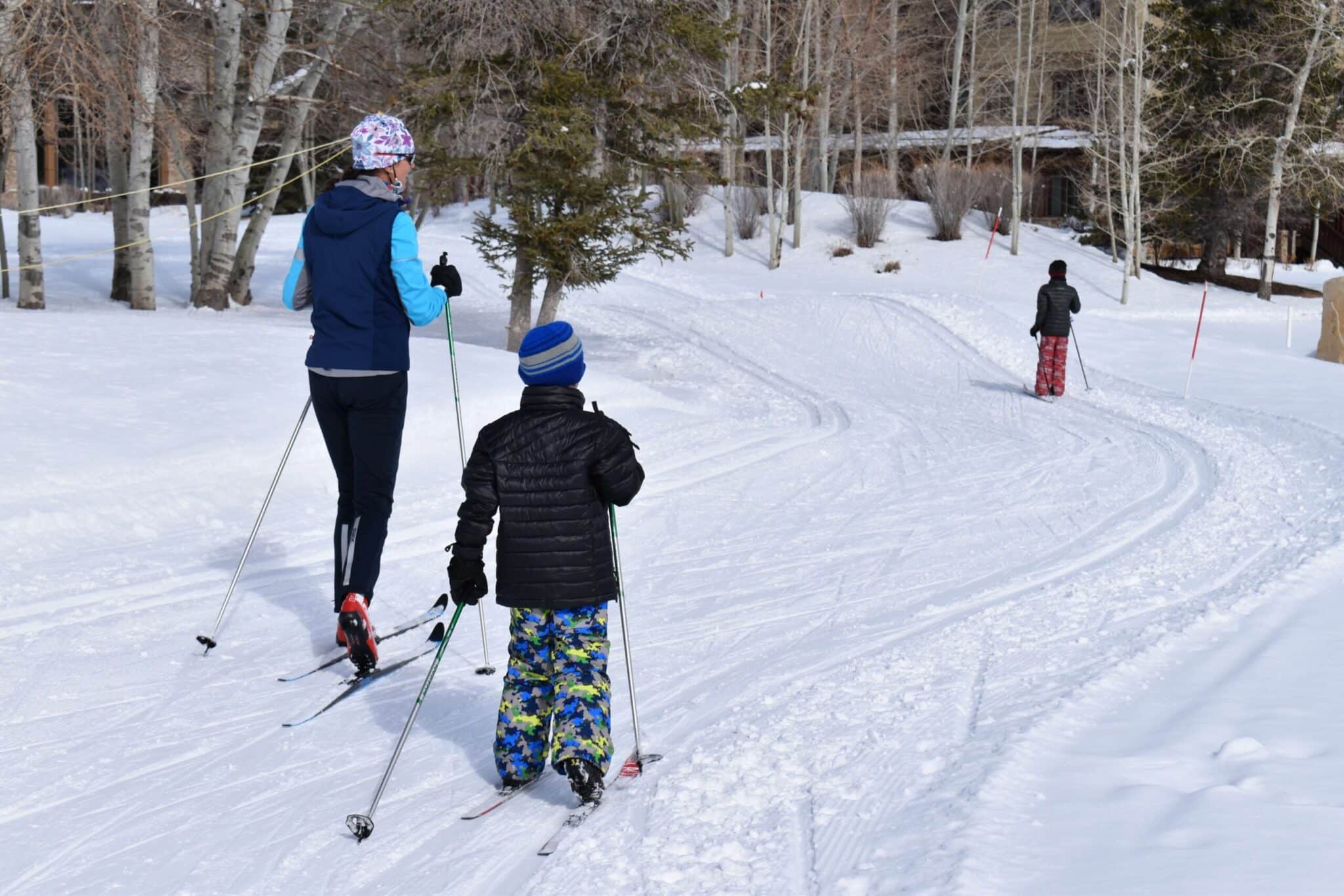
Equipment Differences Between Alpine and Nordic Skiing
The different terrain and the different fitness requirements dictate a lot of what the equipment is for both Nordic vs Alpine skiing.
Equipment for Alpine skiing
The main equipment for Alpine skiing is downhill skis, Alpine boots, and poles. Here’s a quick rundown of what you’ll look for:
Alpine Skis: In recent years, Alpine skis have gotten wider to help skiers plow through different snow conditions. While they may appear straight, nearly all skis have a wider shape at the ends and narrower in the middle to make turning easier. Read all about the best alpine skis for kids.
Alpine Ski Bindings: Alpine ski bindings are stiff and rigid and attach to both the front and the back of the boot. They’re designed with a system called the DIN that sets how firmly your boots are held in place. Beginner DINS allow skis to pop off more easily in an impact and an expert DIN is very difficult to unintentionally get off. To remove Alpine ski bindings, the back of the binding needs to be pressed down, and the boot pops right out.
Alpine Ski Boots: Alpine ski boots are made of stiff plastic and are generally not very comfortable. They are good for skiing in, but are difficult to walk in, with several rigid metal buckles, and are not good for wearing beyond the ski day. Read all about the best kids ski boots.
Alpine Ski Poles: Alpine ski poles should go about up to the uses waist. They’re mostly used for intermediate and advanced skiers, and often not at all for children. They’re primarily used for advanced ski techniques, though they are also helpful for getting across flat areas. Read all about using alpine ski poles.
Equipment for Nordic Skiing
The main equipment for Nordic skiing sounds about the same as Alpine skiing, but the type of equipment matters a lot (just like the cycling analogy above).
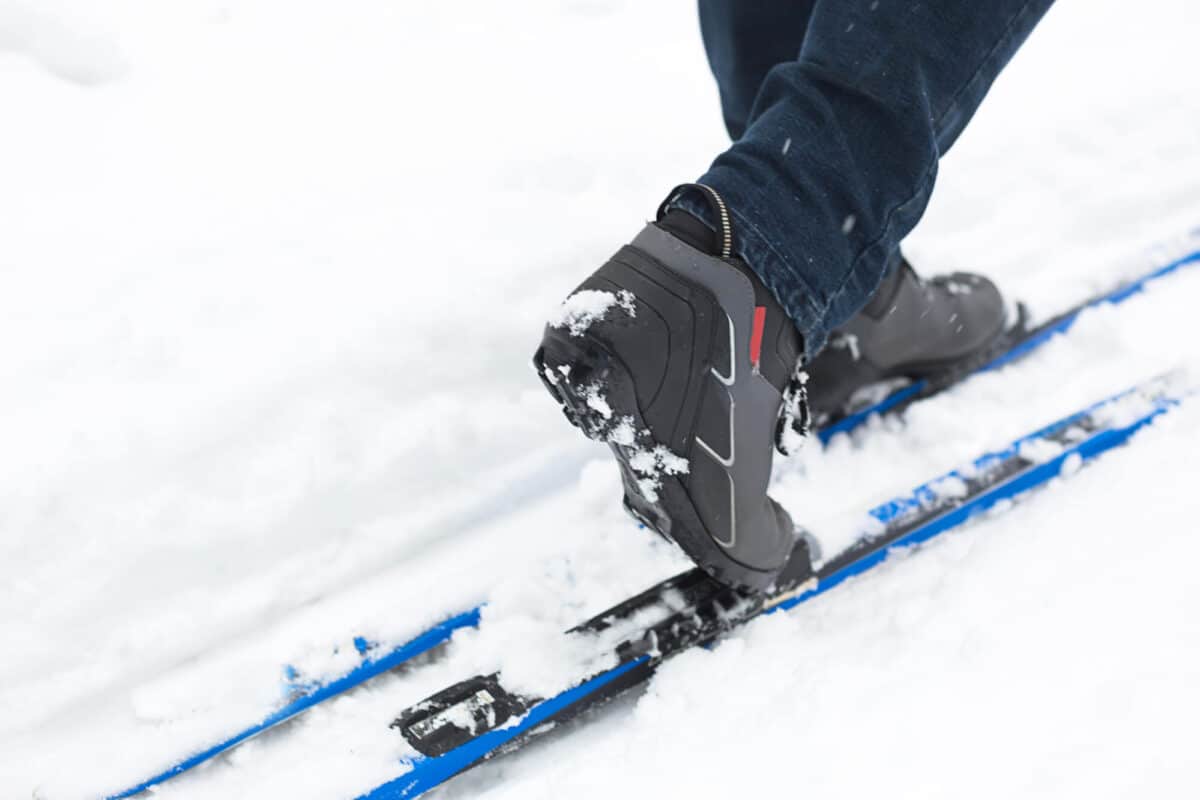
Nordic Skis: Nordic skis are very long and skinny. They extend above the skier’s head when held upright and are all around very thin.
Nordic Ski Bindings: The bindings on Nordic skis are critical to the movement of a Nordic ski. The bindings only attach to the boot at the toe and are flexible to let the boot move both forward and backward.
Nordic Ski Boots: Nordic ski boots are generally pretty soft and are commonly made of leather. Classic Nordic boots are more flexible than skate ski boots, which are more rigid (though nothing compared to how rigid an Alpine ski boot is). All Nordic ski boots only attach to the bindings at the toe.
Nordic Ski Poles: Nordic ski poles, much like the skis, are much longer than Alpine ski poles. They’re designed to help propel you across the snow, whereas Alpine ski poles are more about technique. Most Nordic ski poles go up to a skiers chest.
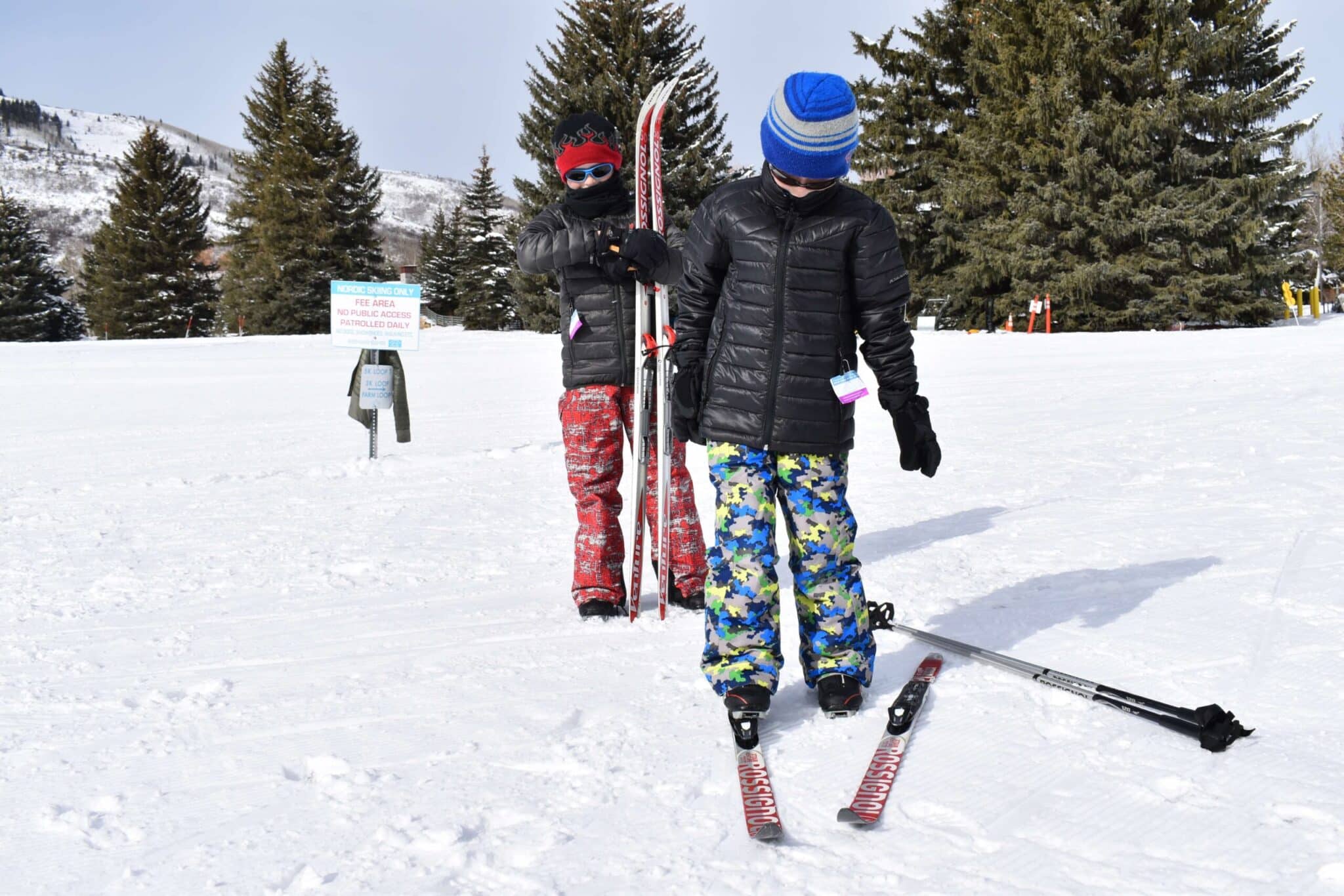
Clothing for Nordic vs Alpine Skiing
There are some MAJOR clothing differences between Alpine and Nordic Skiing, and most of that is due to activity level. Nordic Skiing is much more active and Alpine skiing has long wait times in lines and on chairlifts. Here is what we recommend wearing for each.
Best Clothing for Alpine Skiing
When you’re Alpine skiing, you’ll want to wick sweat away, but also stay warm and dry. Here are our top clothing recommendations:
Base Layer: Made of merino wool or synthetic fibers to both wick moisture and insulate
Mid Layer: To insulate and keep warm
Waterproof snow coat and snow pants: Insulated, waterproof, and breathable are a MUST
Ski socks: Merino wool is always our favorite
Gloves or mittens: Thicker gloves or mittens are ideal, and having them be waterproof is essential
Helmet: You’re going fast, so make sure to protect your head!
Best Clothing for Nordic Skiing
When you’re Nordic skiing, you are almost constantly moving. Staying warm, but also breathable is essential, so moisture wicking is very important.
Base Layer: Made of merino wool or synthetic fibers to both wick moisture and insulate
Mid Layer: To insulate and keep warm – a fleece is a great option here
Windproof jacket and snow pants: Lightly insulated and breathable are a MUST. Avoid excessive bulk
Ski socks: Merino wool is always our favorite
Gloves or mittens: thin gloves are the best option for Nordic skiing
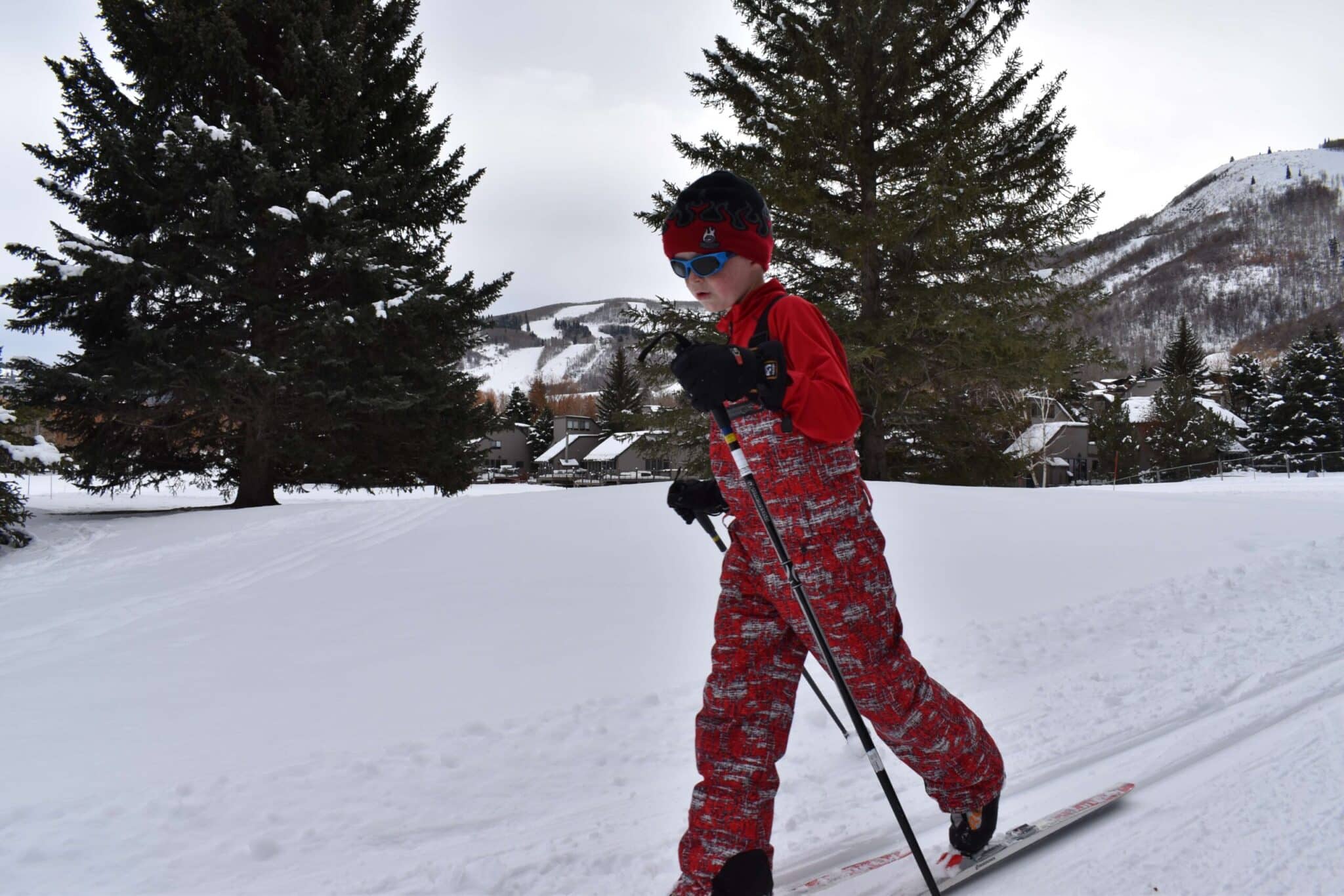
Is Alpine Or Nordic Skiing a Better Workout?
Personally, I will choose Alpine skiing over Nordic skiing almost any day of the week…primarily because I like to go FAST! However, if you’re looking for the best ski workout, Nordic skiing is the way to go. Nordic skiing is a better workout because it’s a sustained pace, and consistent movement, so it gets your heart rate going and keeps it at a consistent level throughout your whole workout.
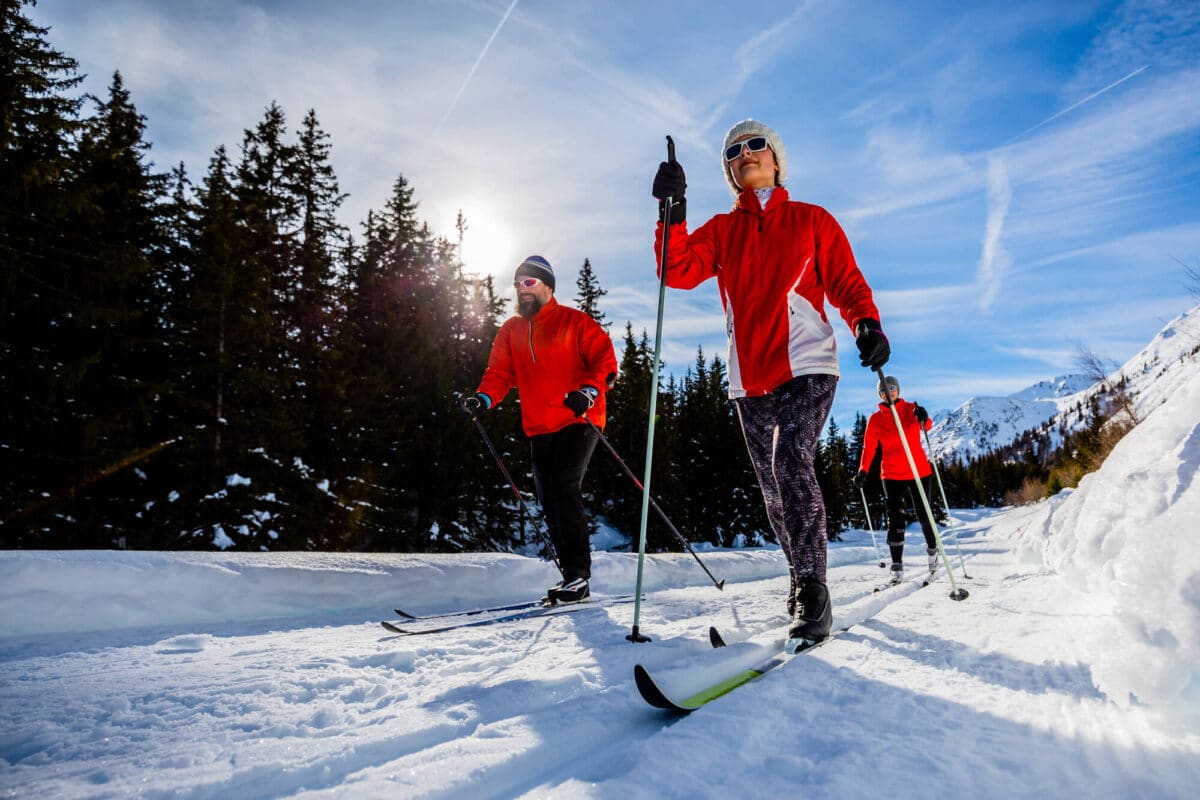
Unfortunately, Alpine skiing involves lots of breaks to wait in line and on chairlifts, so while your heart rate can get high while you’re going down the hill, it will drop down when you are on the chairlift. This means that Alpine skiing does not provide the same fitness benefits as Nordic skiing.
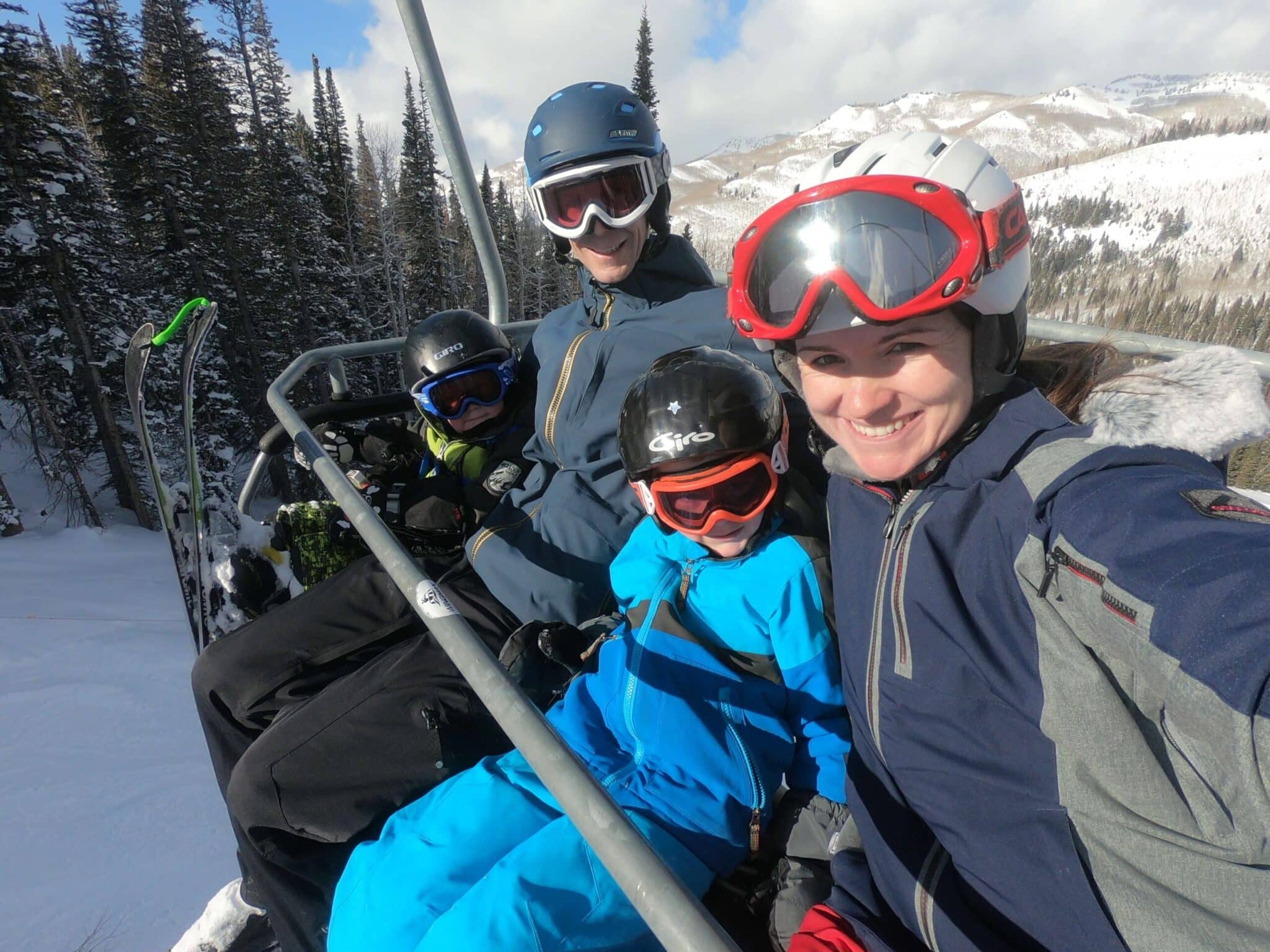
FAQ’s for Alpine Skiing with Kids
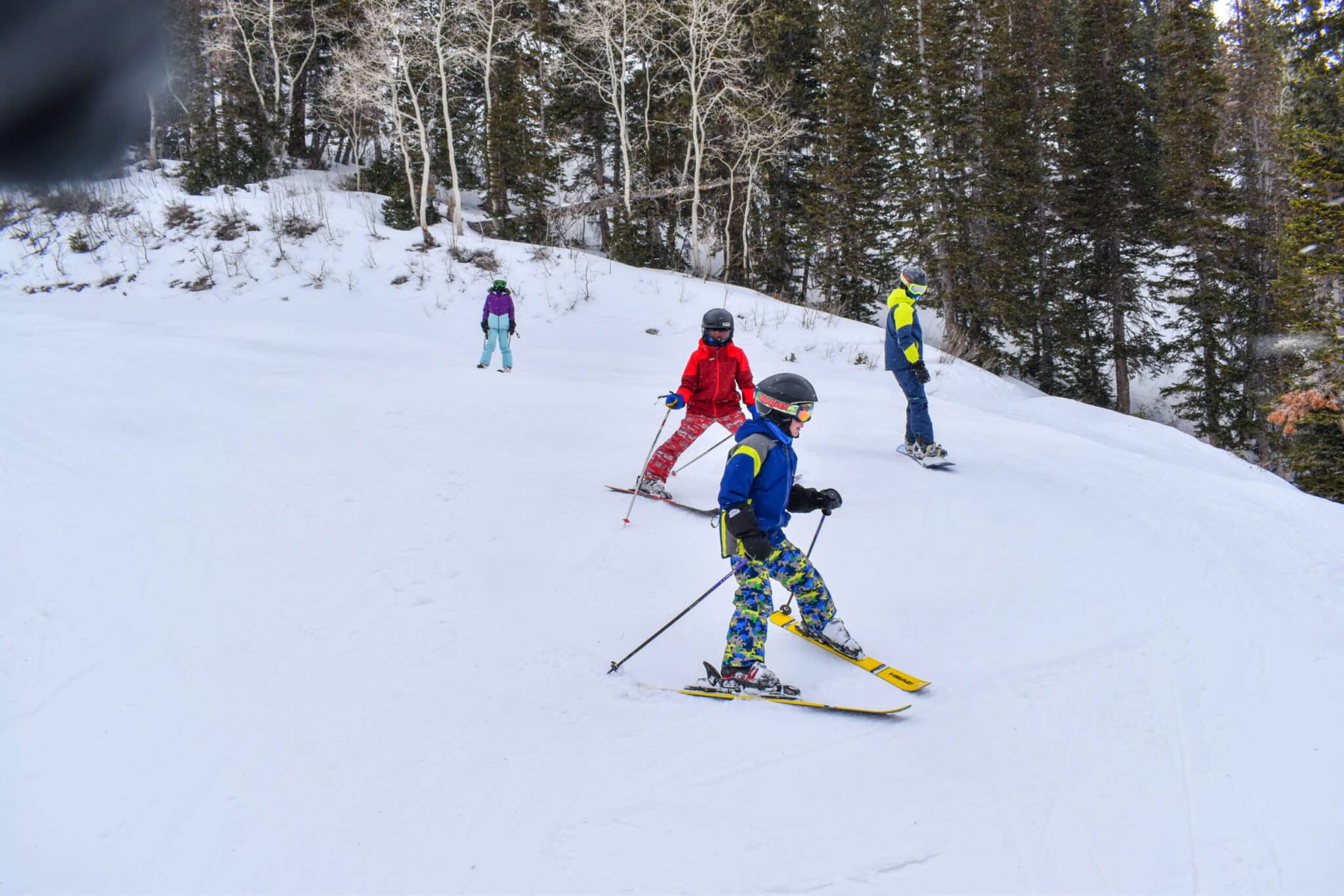
When can my child start Alpine skiing?
Kids can generally start Alpine skiing between the ages of 3 and 5. The focus in the beginning is usually on fun and basic skills like balancing and stopping.
Is Alpine skiing safe for kids?
While all sports carry some risk, Alpine skiing can be relatively safe when proper safety measures, like wearing helmets and using well-maintained equipment, are followed. Teaching your kids ski safety is essential so they can keep themselves and others safe on the ski hill.
How should my child dress for Alpine skiing?
Layering is crucial, starting with moisture-wicking base layers, insulating middle layers, and a waterproof, breathable outer layer. Don’t forget gloves, goggles, and a helmet.
Should my child take lessons?
The basics of Alpine skiing can be taught by a parent (assuming they’re at least a solid intermediate skier themself). As kids get more advanced, learning from a professional ski instructor is a fantastic idea. Group lessons are often a fun and cost-effective way to start.
How do I choose the right ski resort?
Look for resorts with family-friendly amenities, like beginner slopes, kids’ ski schools, and child-care options. Grab our ski trip planner for more tips pn choosing where to go.
What are the basic skills my child needs to learn first?
Initially, focus on basic skills like balancing on skis, the snowplow for stopping, and simple turns. These skills form the foundation for more advanced techniques, and must be mastered before moving to more difficult terrain.
How long should we plan to be on the ski slope with kids?
For young children and beginners, shorter sessions of a couple of hours may be sufficient. You can gradually extend the time as they become more comfortable and build endurance. Most kids over age 6 can ski for most of the day.
Is Alpine skiing a good family activity?
It’s one of the VERY BEST! Truthfully, we cannot say enough good things. Some of our very best family memories have been made while skiing together.
